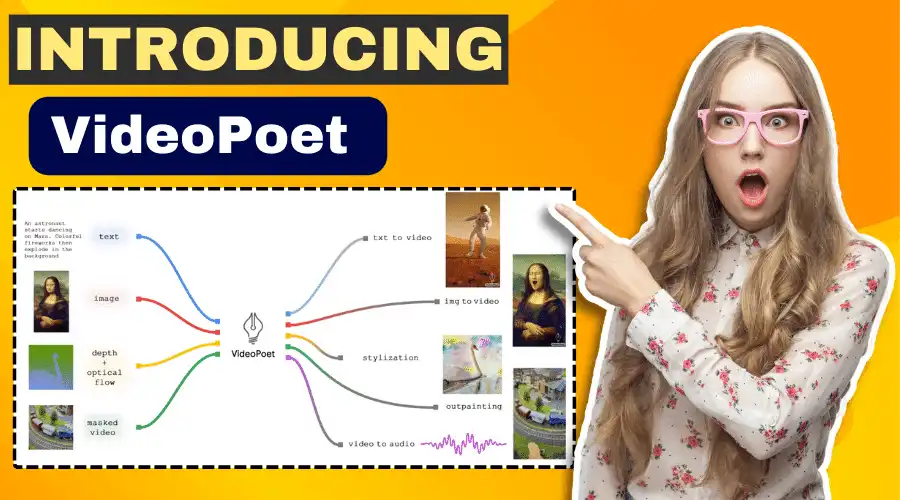Google VideoPoet is an AI assistant capable of generating high-quality video content from various inputs like text, images and existing video clips. This in-depth guide will explore VideoPoet’s many capabilities and applications.
What is VideoPoet?
VideoPoet is Google’s breakthrough AI model for video creation. Some key things to know:
- It’s a multimodal model that understands different media like text, images, audio and video.
- The core system allows tasks like text-to-video, image-to-video and more.
- VideoPoet generates videos at 16 FPS with high visual fidelity and realistic motion.
- It demonstrates state-of-the-art abilities beyond any single competitor currently.
How VideoPoet Works
To achieve its multimodal generation, VideoPoet incorporates:
- MMVT tokenizers that encode video/images semantically.
- SoundStream for audio encoding.
- An autoregressive Transformer for predicting future tokens.
- Pre-training on massive multimodal datasets.
This gives VideoPoet a unified understanding of relationships between media types.
VideoPoet’s Capabilities
Some of VideoPoet’s headline abilities include:
- Text-to-video generation from written prompts.
- Image-to-video animation guided by static scenes.
- Stylization by rendering videos in different visual styles.
- Video inpainting/outpainting for content enhancement.
- Long-form video editing combines shots coherently.
It stands out versus competitors in long-range motion generation.
Using VideoPoet’s Powers Creatively
A few exciting applications of VideoPoet include:
- Automating highlight reels from long videos.
- Transforming home movies into animated narratives.
- Restyling videos as cinematic trailers or graphic novels.
- Uprezzing low-res footage into painterly renderings.
- Enhancing archival videos by filling in missing frames.
This provides a highly intuitive tool for visual storytelling.
Frequently Asked Questions
In this section, we’ll address some common queries about VideoPoet:
Is VideoPoet publicly available?
Not yet, but capabilities may integrate into Google products over time.
What types/lengths of videos can it generate?
currently, it can generate 16 FPS portrait videos up to ~30 seconds long.
How does it compare to other video AI tools?
It demonstrates more advanced skills than competitors currently.
Can the generated content be used commercially?
As experimental research, generated media shouldn’t be assumed copyright-free without permission.
How can YouTube creators leverage VideoPoet?
Once public, it could help automate video editing, create animated narration and more on the platform.
Key Takeaways
- VideoPoet represents a major step in AI’s ability to understand and generate high-fidelity video content from various inputs.
- It opens many creative doors for casual video editing, visual storytelling, preserving historical footage and more through computer generation.
- As one of the most advanced video-focused AI models, VideoPoet points towards more accessible and powerful media creation tools unlocked by continued generative algorithm advances.

3 thoughts on “Introducing VideoPoet: Google’s Revolutionary AI for Video Generation”